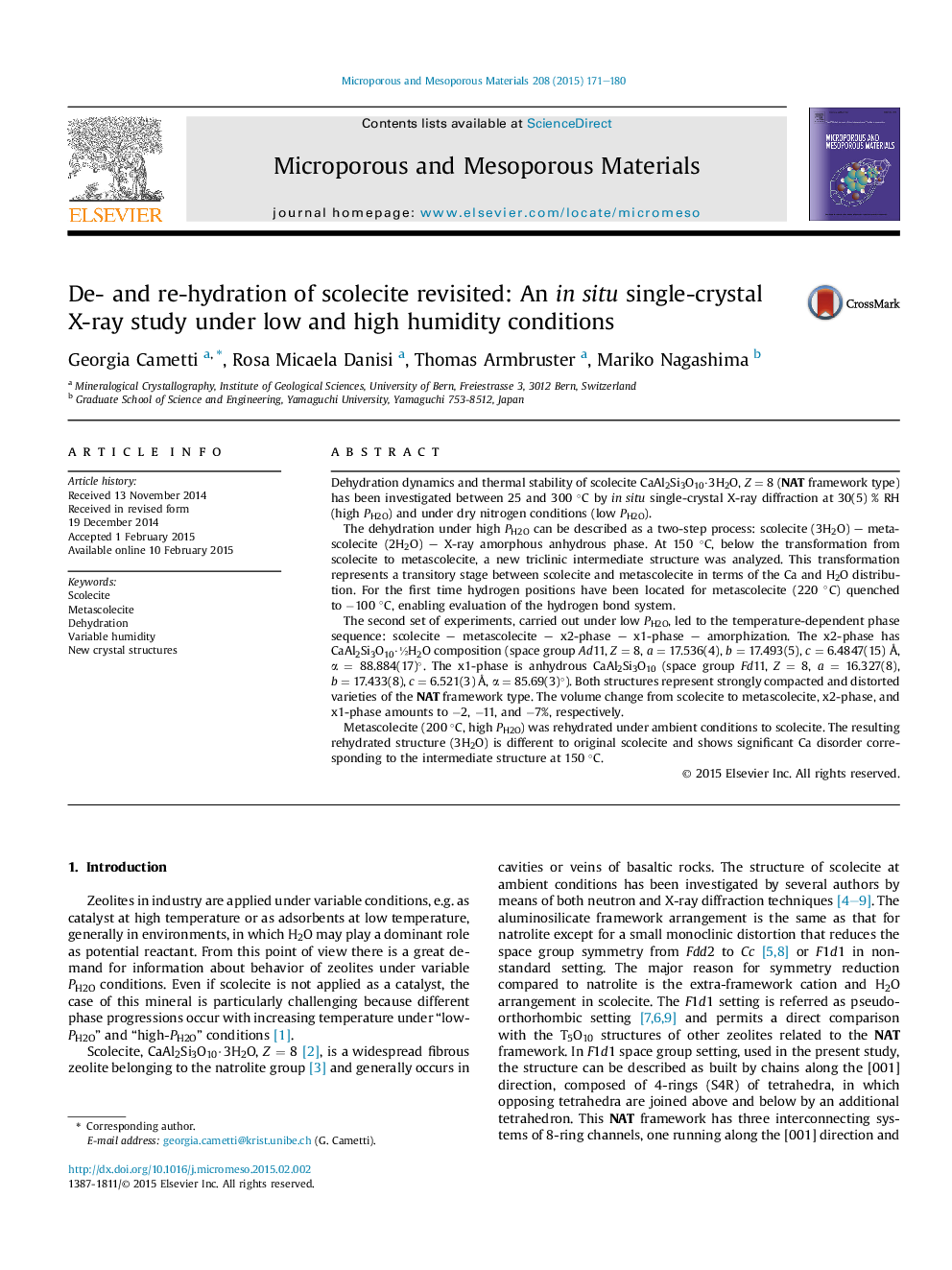| Article ID | Journal | Published Year | Pages | File Type |
|---|---|---|---|---|
| 72641 | Microporous and Mesoporous Materials | 2015 | 10 Pages |
•We tracked the dehydration behavior of scolecite between 25 and 300 °C.•The process has been investigated under low and high humidity conditions (PH2O).•Hydrogen positions of metascolecite under high PH2O were determined.•Two new structures (x1-phase and x2-phase) occurring only at low PH2O were solved.•Refined rehydrated structure of scolecite was found different from RT scolecite.
Dehydration dynamics and thermal stability of scolecite CaAl2Si3O10·3H2O, Z = 8 (NAT framework type) has been investigated between 25 and 300 °C by in situ single-crystal X-ray diffraction at 30(5) % RH (high PH2O) and under dry nitrogen conditions (low PH2O).The dehydration under high PH2O can be described as a two-step process: scolecite (3H2O) – metascolecite (2H2O) – X-ray amorphous anhydrous phase. At 150 °C, below the transformation from scolecite to metascolecite, a new triclinic intermediate structure was analyzed. This transformation represents a transitory stage between scolecite and metascolecite in terms of the Ca and H2O distribution. For the first time hydrogen positions have been located for metascolecite (220 °C) quenched to −100 °C, enabling evaluation of the hydrogen bond system.The second set of experiments, carried out under low PH2O, led to the temperature-dependent phase sequence: scolecite – metascolecite – x2-phase – x1-phase – amorphization. The x2-phase has CaAl2Si3O10·½H2O composition (space group Ad11, Z = 8, a = 17.536(4), b = 17.493(5), c = 6.4847(15) Å, α = 88.884(17)°. The x1-phase is anhydrous CaAl2Si3O10 (space group Fd11, Z = 8, a = 16.327(8), b = 17.433(8), c = 6.521(3) Å, α = 85.69(3)°). Both structures represent strongly compacted and distorted varieties of the NAT framework type. The volume change from scolecite to metascolecite, x2-phase, and x1-phase amounts to −2, −11, and −7%, respectively.Metascolecite (200 °C, high PH2O) was rehydrated under ambient conditions to scolecite. The resulting rehydrated structure (3H2O) is different to original scolecite and shows significant Ca disorder corresponding to the intermediate structure at 150 °C.
Graphical abstractFigure optionsDownload full-size imageDownload as PowerPoint slide
